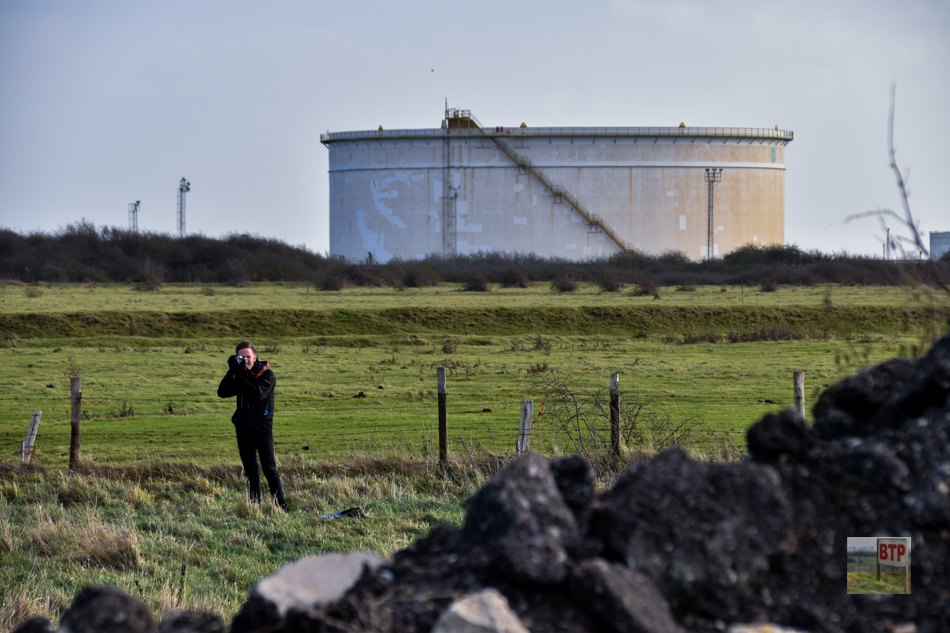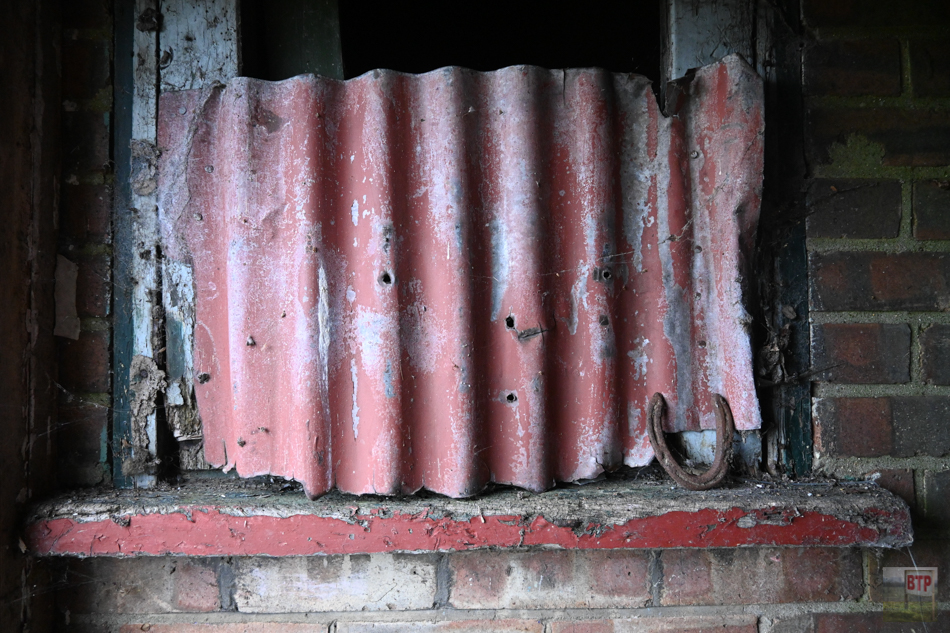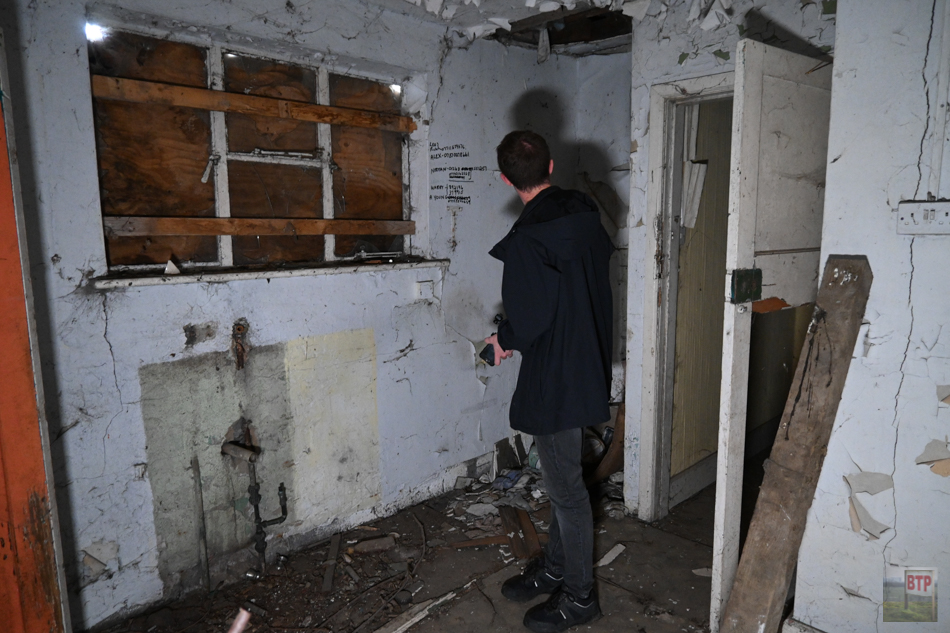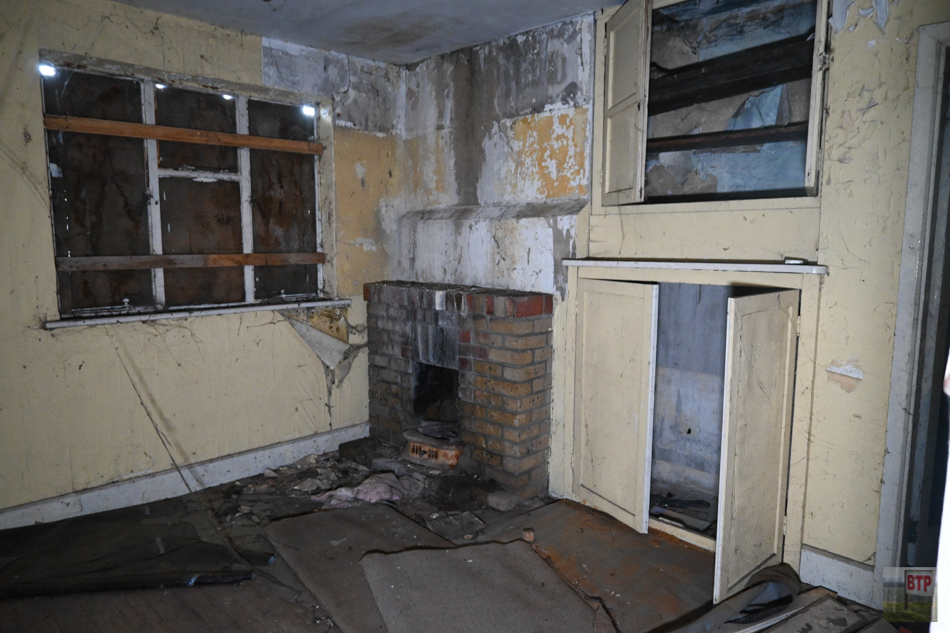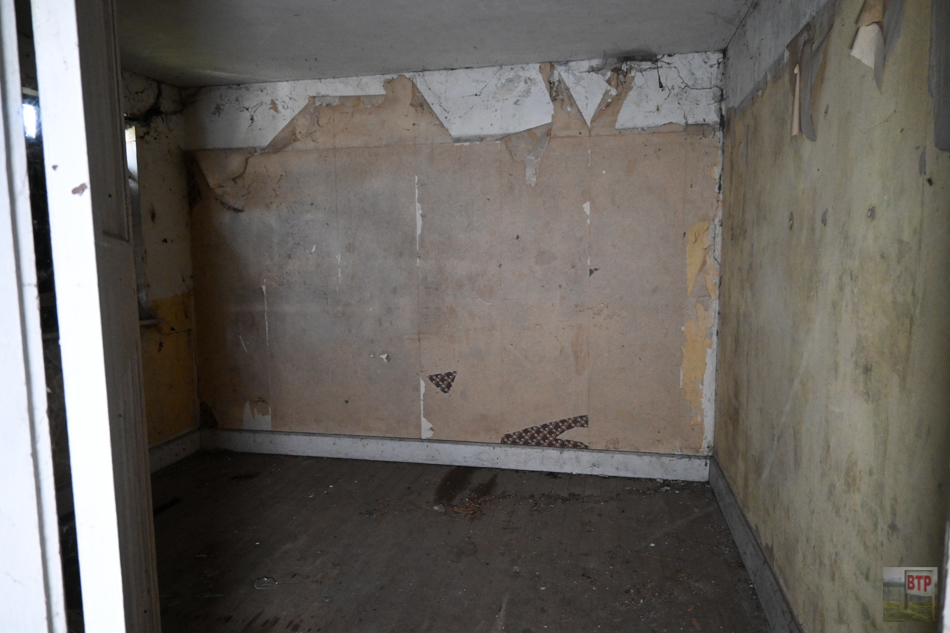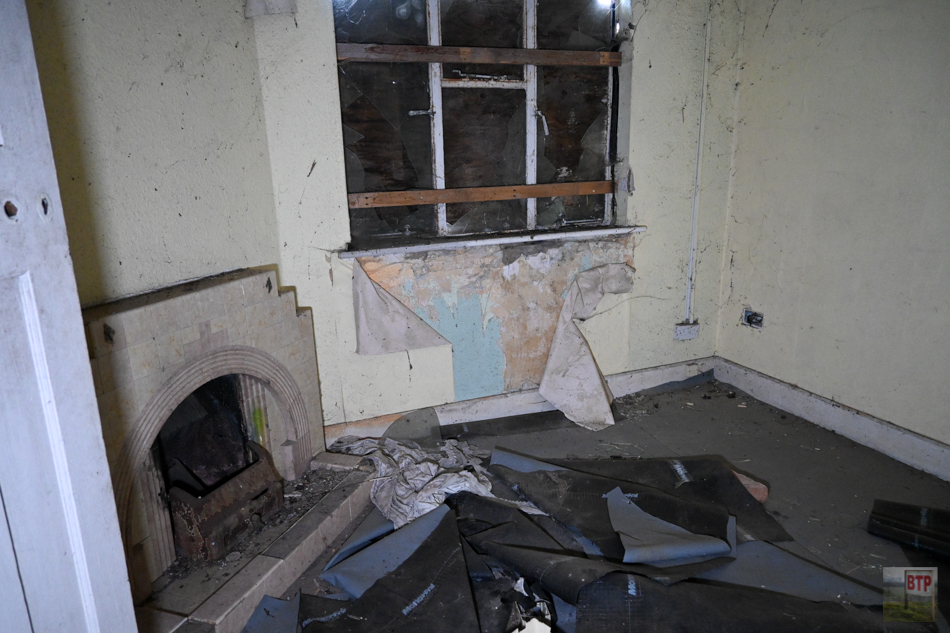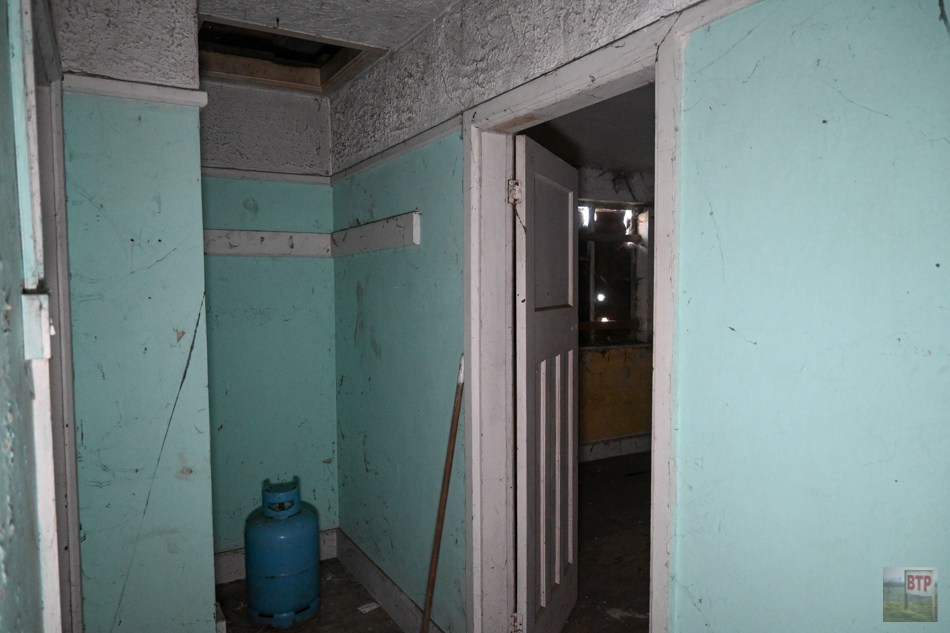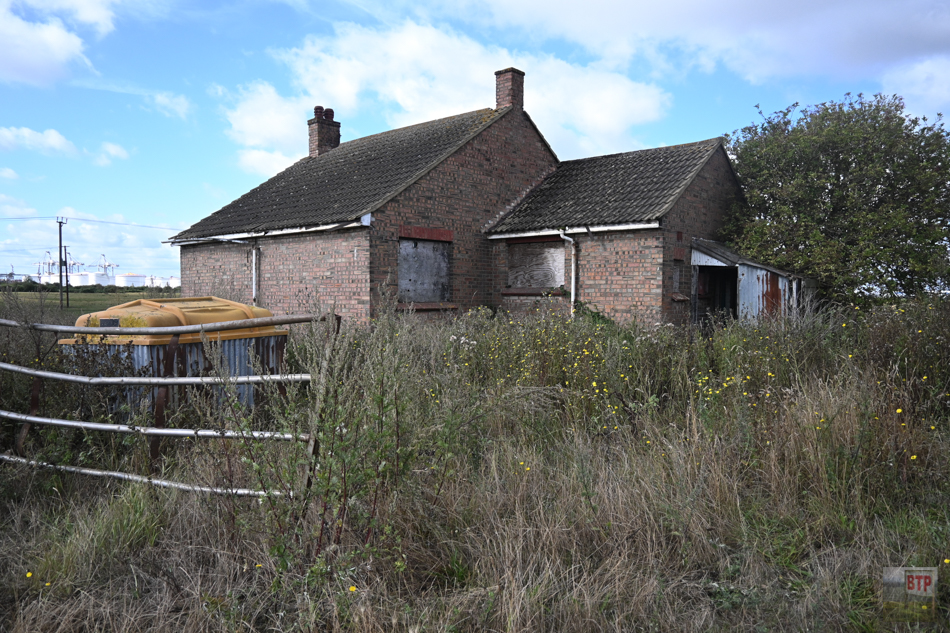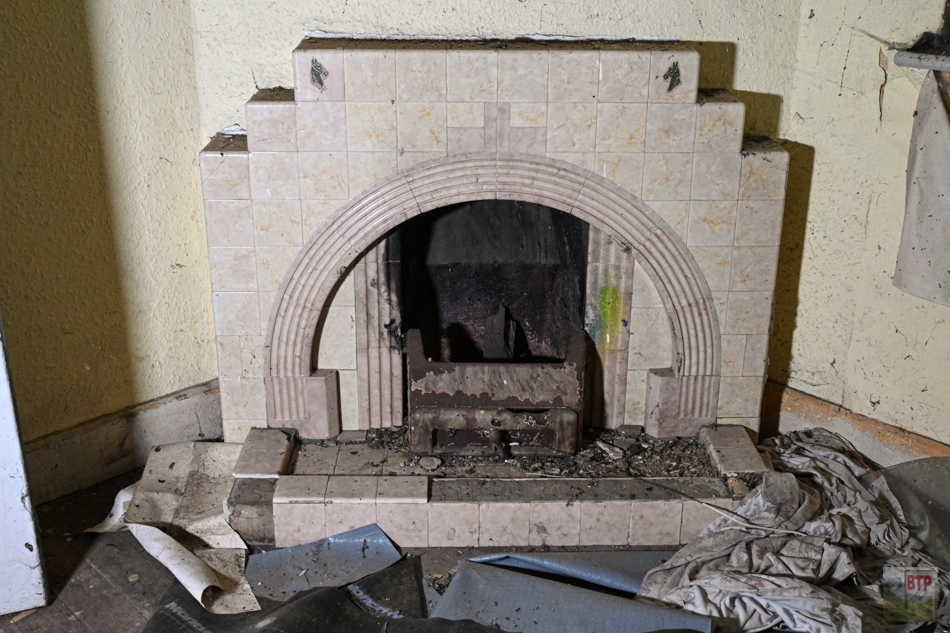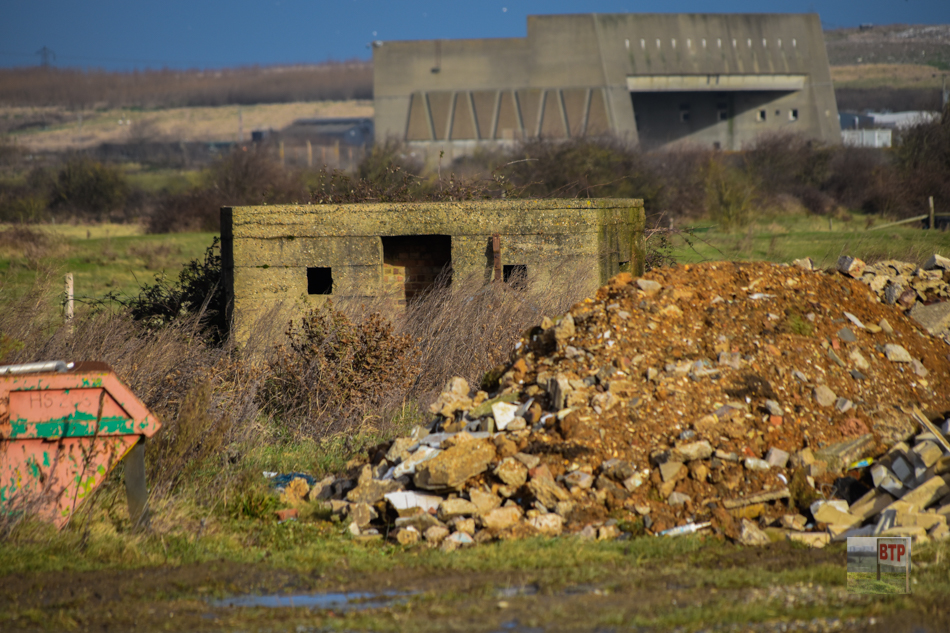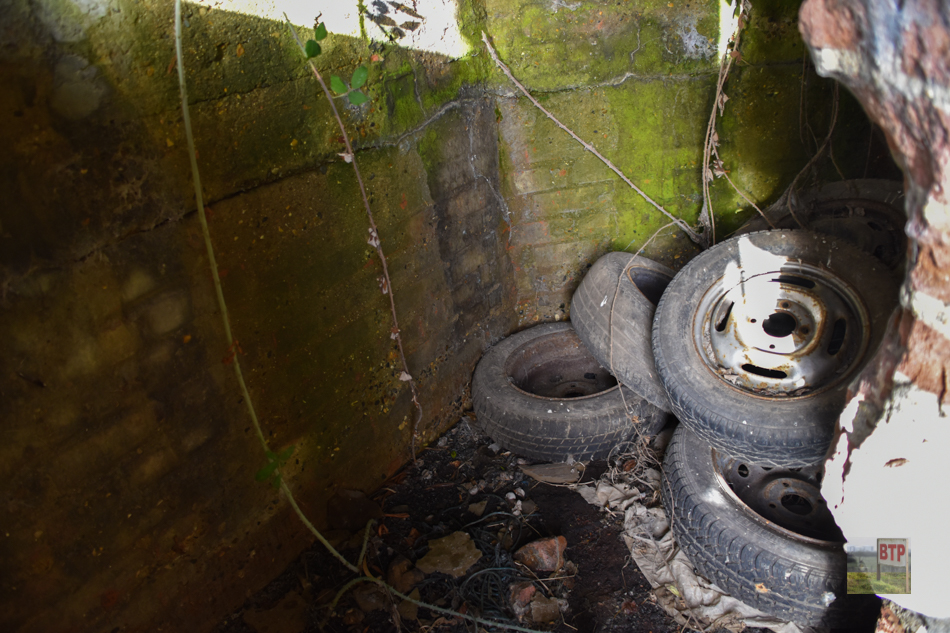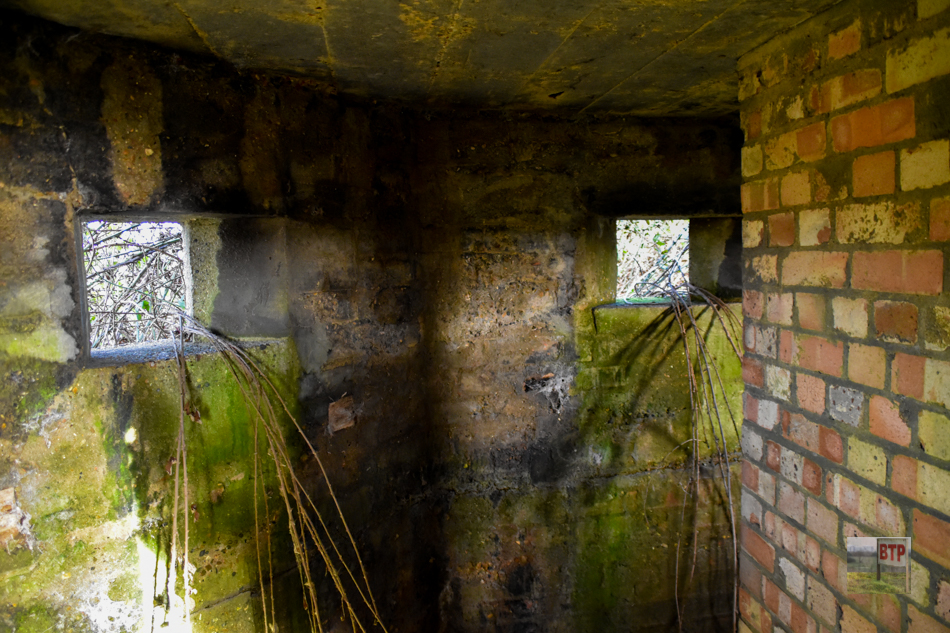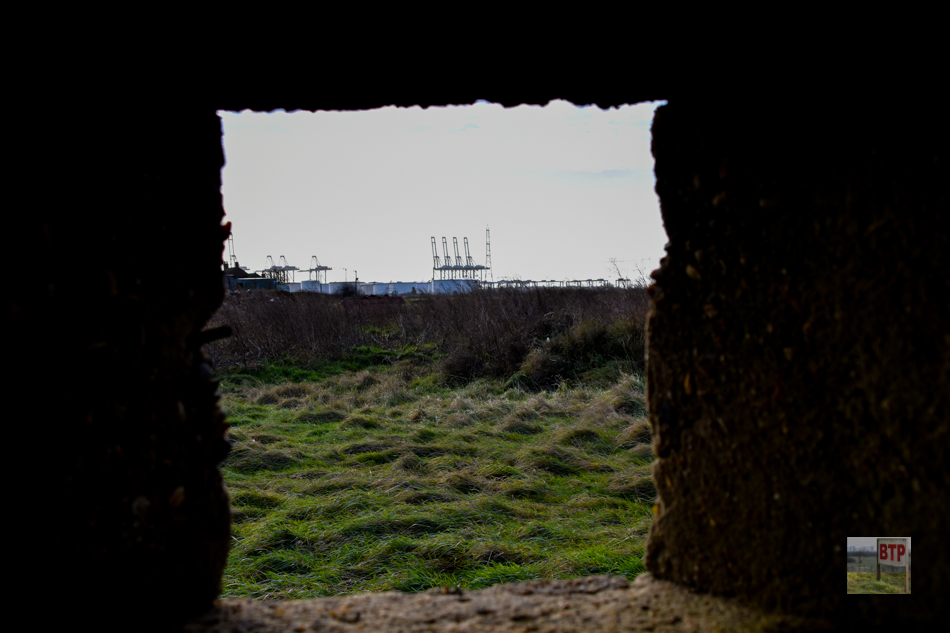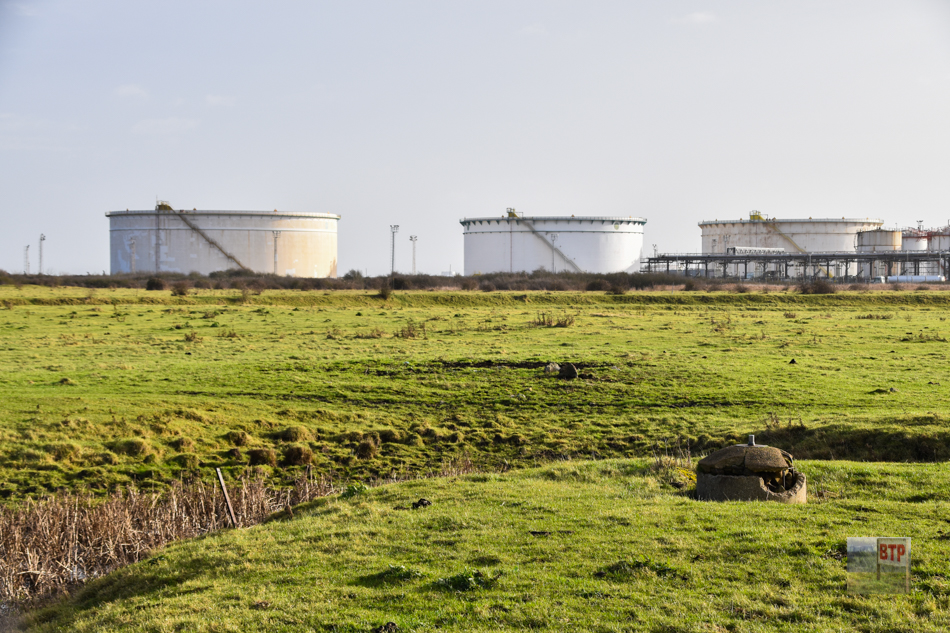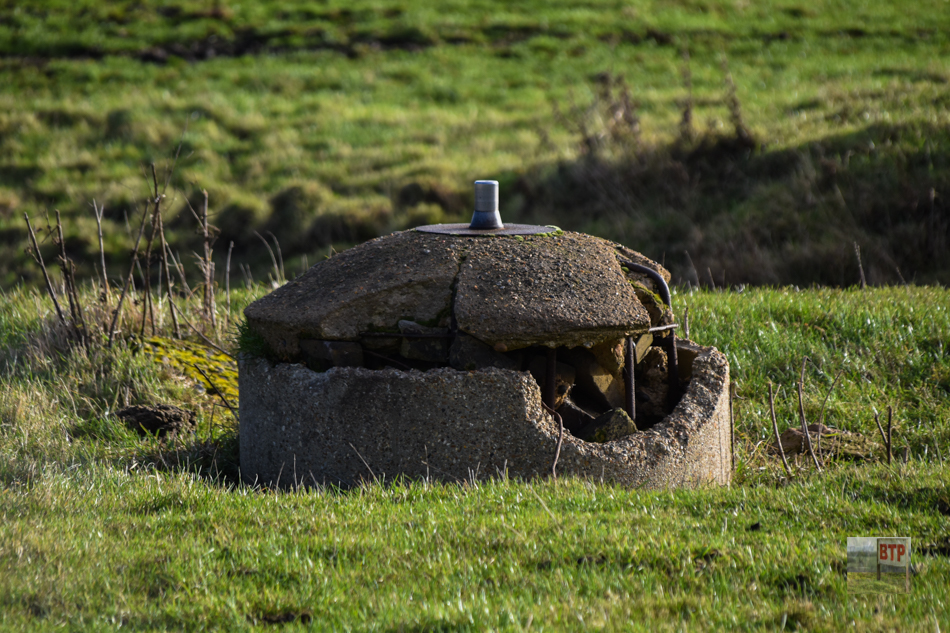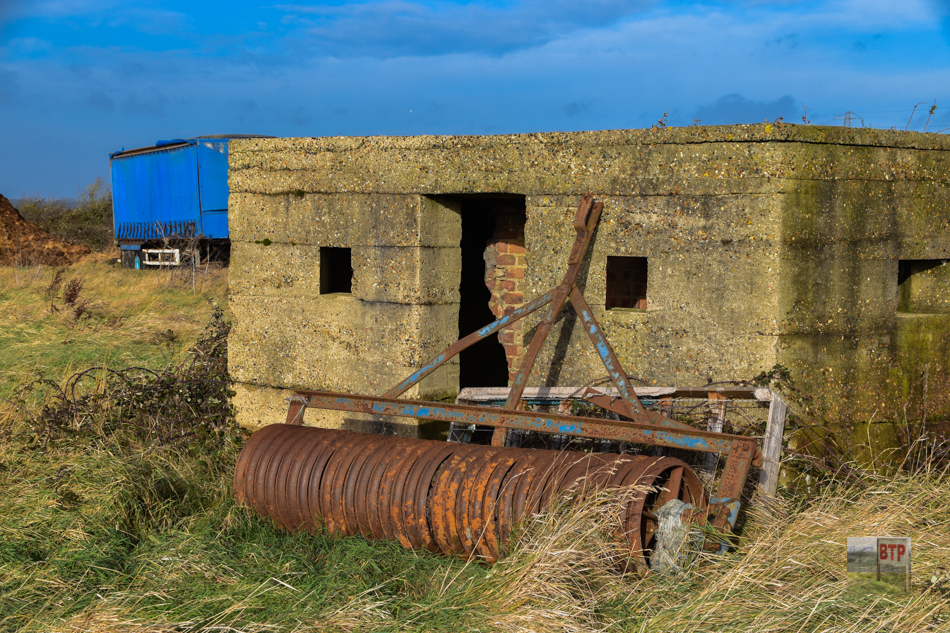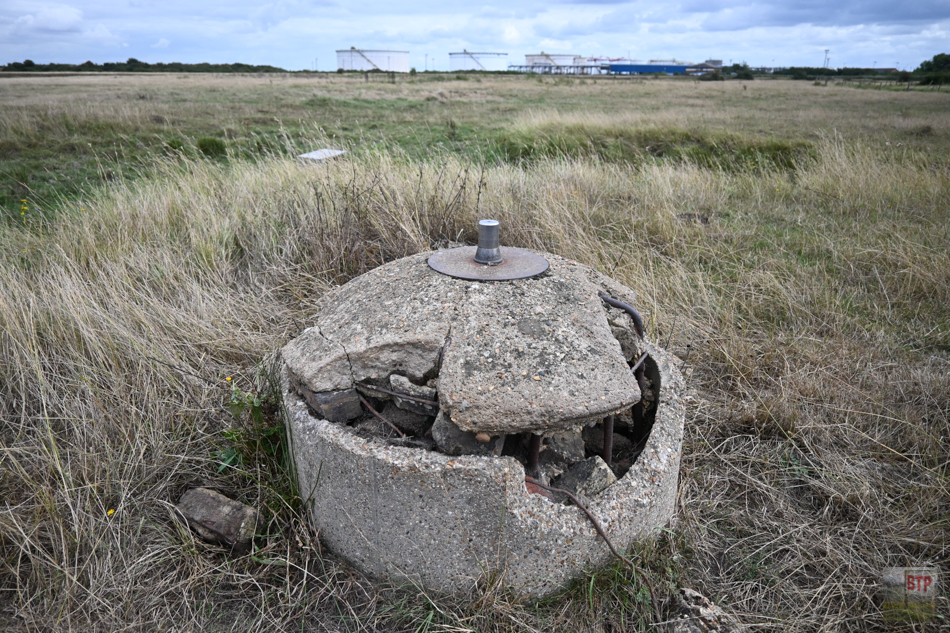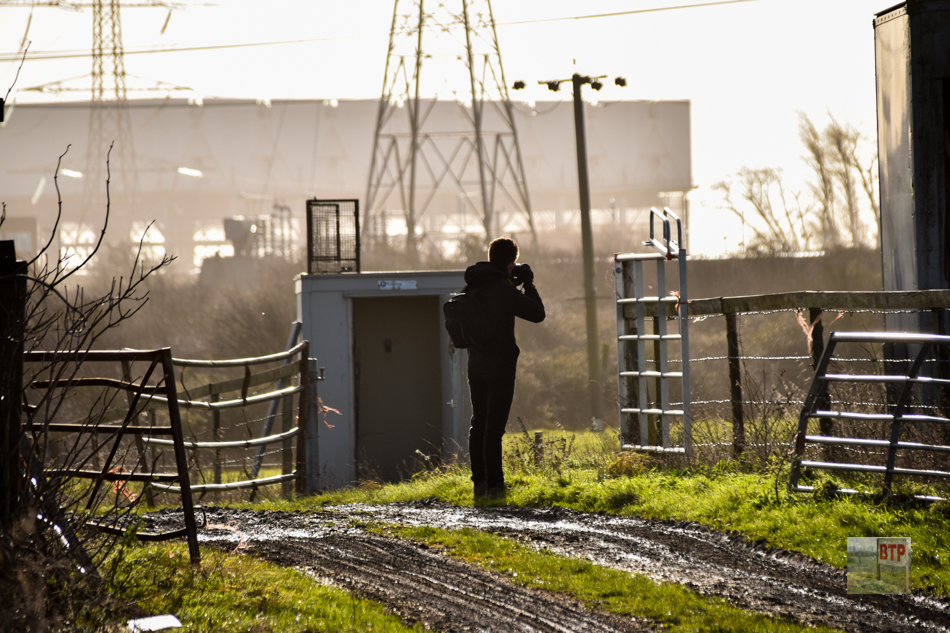
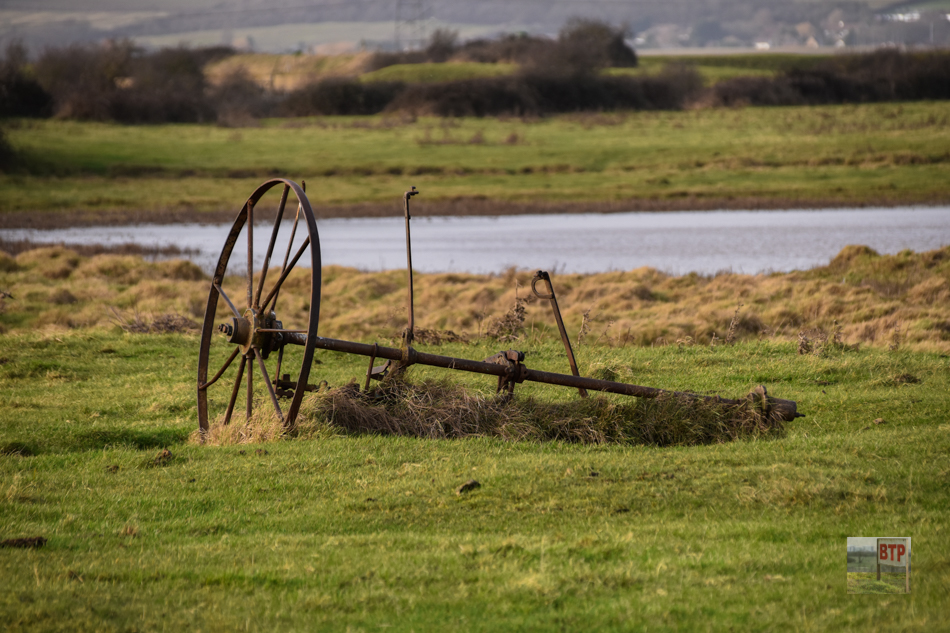
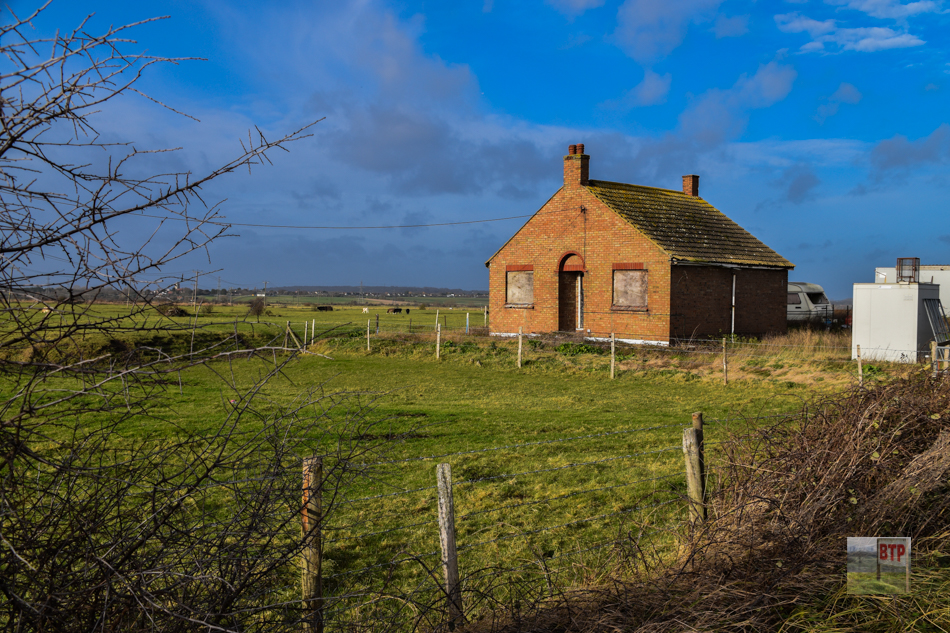
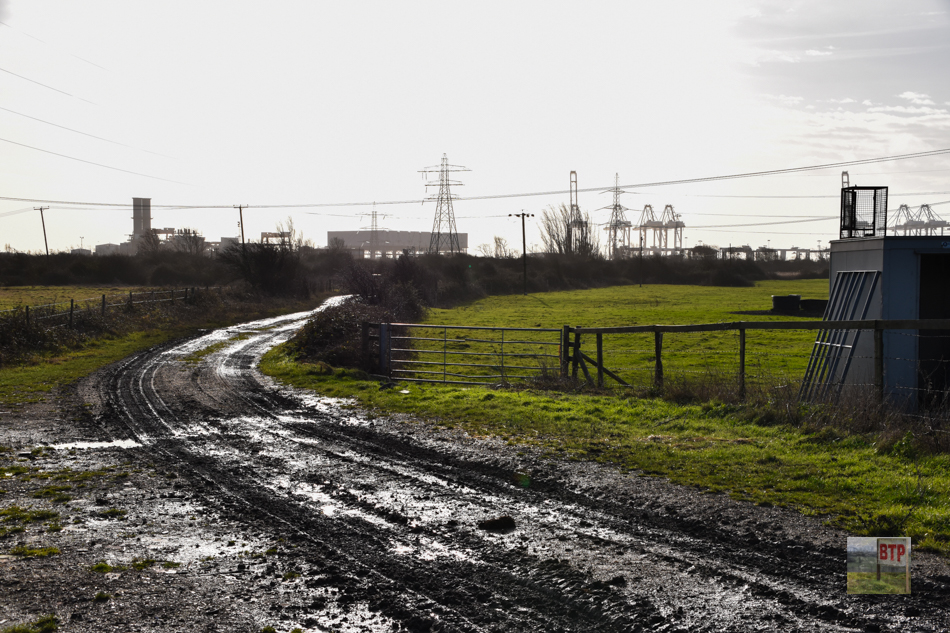
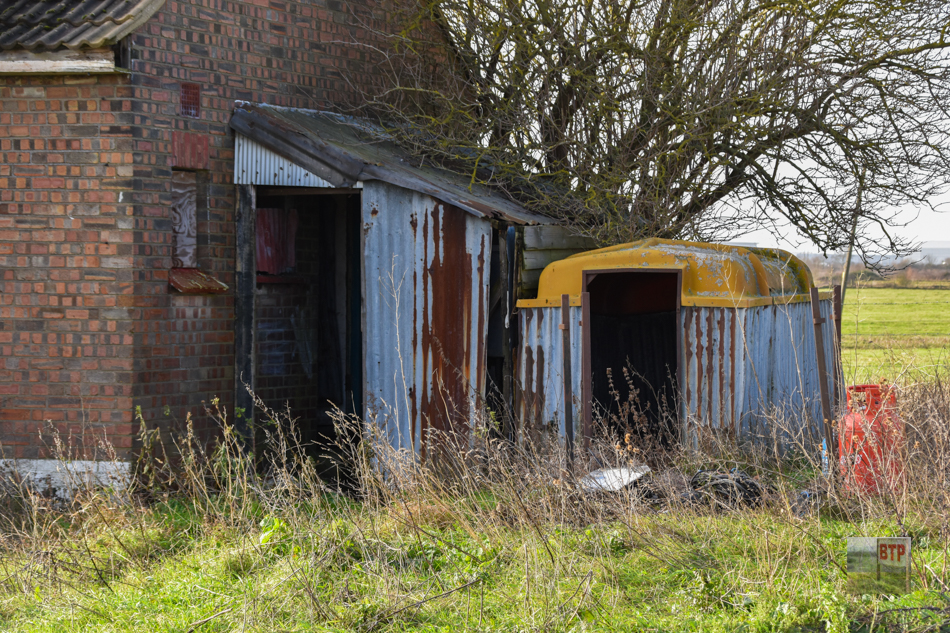
We visited Oozedam Farm in January of 2018, on a trek across Fobbing Marshes which saw us head from the farm to discover a lost explosives factory, bomb craters and much more. Starting here, we knew that there was a pillbox on the old farm and possibly even the remains of a Spigot Mortar or two. Despite living only across the water at Canvey Island, Joe and I were completely unaware these existed until discovering this great World War Two Heritage trail by Fred Nash – you can click here to get the guide and visit yourself.
Oozedam Farmhouse
The farm itself didn’t seem to be inhabited at all, and seemed hardly used, although a lorry did arrive whilst we were exploring. A public footpath connects the farm from the nearby roundabout, which is where we started. Heading in, we passed the old farm buildings including a modern cottage, probably built in the post-war era, all boarded up. This was clearly a rather recent structure, although we know that Oozedam Farm stood long before this and once had a much older farmhouse bearing a russet hipped roof. Census records record that it was originally a local marshland farm acquired by the Orsett Hall estate in the 1800s, although may not have had many people living on it (Source: Bingley, Fobbing Life & Landscape). The Orsett Hall estate let the farm out for grazing in 1902, and possibly was sold off in 1925. It is interesting to note how the farmstead became a focal point of defensive militarisation during the Second World War.
In a Facebook post, Muriel Bond; resident of Corringham, offered her vivid memories of the Oozedam old and new farmhouses as follows:
“That farmhouse was my grandparents house for many years. Me and my sisters spent our childhood summer holidays there. The old farmhouse you refer to was still standing but derelict when I was a kid and grandads chickens used it. It was called the Black House and was demolished early 60’s. In fact all the time my grandparents lived there (30 + years) it was known as Blackhouse farm. Happy memories roaming the marshes. The old black house stood about 60 feet to the rear of the bungalow. My Nan’s address was always ‘Blackhouse Farm’. Most of the video was taken at the back of Blackhouse towards what grandad used to call Pitsea Creek. The bungalow that you went into (my grandparents house) was built in front of the old black house with about 50 or 60 feet between them. The old black house had a cellar and I assume that was filled in with the rubble because after it was demolished the footings were still visible. It was in line with the barns the other side of the track. Behind that barn was an old orchard of dead trees. Very eerie. As the video went through the bungalow, I named all the rooms. Those fireplaces were not the originals. The front room had a black wooden structure almost to the ceiling with blue and white tiles inset. The cupboard beside the fireplace in the other sitting room is where the dog and cats had their pups and kittens! Such lovely memories. Thanks for the video.”
WW2 Pillbox & Spigot Mortar
We first spotted a Type 24 pillbox, standard in design, which seemed to be in fair condition and on closer inspection has been left untouched – luckily it wasn’t part of the rubble in front of it! As we walked up to it, Joe spotted a Spigot Mortar stand in the next field. There seem to be another somewhere in the area which we missed. We revisited these in Summer 2019. The blacker bombard spigot mortar was a primitive form of infantry weapon designed to be fired from a pedestal such as the one that survives here in Fobbing. The Home Guard would most likely have used them alongside the pillbox here to defend the Essex coastline and Shell Haven Oil Refinery from a German invasion. Anti-glider ditches once cut through the marshes here, which would have hindered the landing of German Fallschirmjager paratroopers if they came in 1940.
